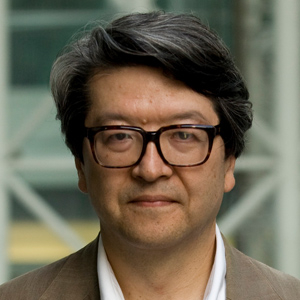We all know that a barter exchange requires a double coincidence of wants. Unless the commodity one party demands is the commodity another party supplies and vice versa, no direct exchange is possible between two people.
Once money enters an economy as the general medium of exchange, however, this reciprocal unity of supply and demand is split into two separate acts of purchase and sale. A purchase represents a demand for a commodity in exchange for money, while a sale represents supplying a commodity in exchange for money. One can then “buy” any commodity one demands, so long as one can find someone else to supply it (at a certain price). Likewise, one can “sell” any commodity one supplies, so long as one can find someone else to buy it (again, at a certain price). It does not matter when, where, and with whom one carries out the transaction, insofar as the other party is accepting the same money as the general medium of exchange. The intermediation of money thus burst through all restrictions of time, space, and knowledge about trading partners imposed by the double coincidence of wants, and triggered a phenomenal expansion in the temporal, spatial, and social spheres of economic exchange, the end result of which is the capitalism that now covers the entire globe. In other words, money is the original source of the efficiency in our capitalist economy.
At the same time, however, it is also the original source of the instability in that same system.
No one can sell unless someone else buys. But no one has to buy immediately after she has sold. She can simply hold on to some or all of the money made from the sale. No one can buy unless someone else sells. But no one has to sell immediately before he will buy. He can simply spend part of the money he already holds. In our capitalist economy, a supply does not necessarily create a demand, and neither does a demand create a supply. Indeed, when people for some reason or other decide as a whole to increase their money holdings by refraining from spending on commodities (a situation Keynes called an increase in liquidity preference), the aggregate demand for all commodities (exclusive, of course, of money) falls short of the aggregate supply of all commodities (again, exclusive of money). When, on the other hand, people as a whole decide to decrease their money holdings by rushing to spend on commodities (a decrease in liquidity preference), the aggregate demand for all commodities exceeds the aggregate supply. In a capitalist economy, “Say’s law,” which insists that aggregate demand will always be equal to aggregate supply, breaks down. In fact, when aggregate demand rises above aggregate supply, we say that the economy is in a boom, and when aggregate demand falls short of aggregate supply, we say that the economy is in a slump.
Neoclassical economists would probably object at this point that, even if it were theoretically possible for aggregate demand and aggregate supply to deviate from each other, this disequilibrium would soon be wiped out by the “invisible hand” of the price mechanism, just as it would be in the case of an imbalance between demand and supply of a commodity. It is true that a disequilibrium between demand and supply of commodities as a whole is no more than a mirror-image of a disequilibrium between demand and supply of money. 1 But, unlike all the other commodities, money does not have its own market .
To sell a commodity is to give that commodity to someone else in exchange for money, and to buy a commodity is to receive it from someone else in exchange for money. We can “sell” money only by buying commodities in their markets; likewise, we can “buy” money only by selling some other commodity in a market. As the general medium of exchange that mediates the sale and purchase of all the commodities in all the markets, money cannot have a market of its own. To be sure, there is a market that is often called a money market. But in reality this is nothing more than a financial market for short-term lending and borrowing, and not a true market for money itself.
In the case of a non-monetary commodity, it has its own market to adjust the disequilibrium between supply and demand. In the case of money, however, the disequilibrium can only be adjusted indirectly by drawing on all of the commodity markets. It necessarily becomes a macroeconomic phenomenon.
Robert Malthus and Karl Marx both attacked (the former timidly, the latter vehemently) Adam Smith, David Ricardo, Jean Baptist Say and other classical economists for their blind faith in Say’s law. However, they failed to develop a theory that took full account of the breakdown of Say’s law. It was Knut Wicksell who first succeeded in working out the macroeconomic consequences of a disturbance in the equilibrium between aggregate demand and aggregate supply in his 1898 publication Interest and Prices. 2
1 According to Walras’ Law summing up all the consumers’ budget equations, when there is an excess demand (supply) for the commodity as a whole, there must be an excess supply (demand) of money with equal value.
2 Knut Wicksell, Interest and Prices , first English edition, 1936, (Reprinted by Kelly: New York, 1962);--------, Lectures on Political Economy, Vol.2 Money , English edition, (Routledge & Kegan Paul: London, 1935). For a more formal representation of Wicksellian cumulative process, see Part I of my Disequilibrium Dynamics – A Theoretical Analysis of Inflation and Unemployment , in which I attempted to reformulate Wicksell's theory by explicitly incorporating firms’ decentralized price-formation process into a monetary theory of macroeconomic dynamics.

